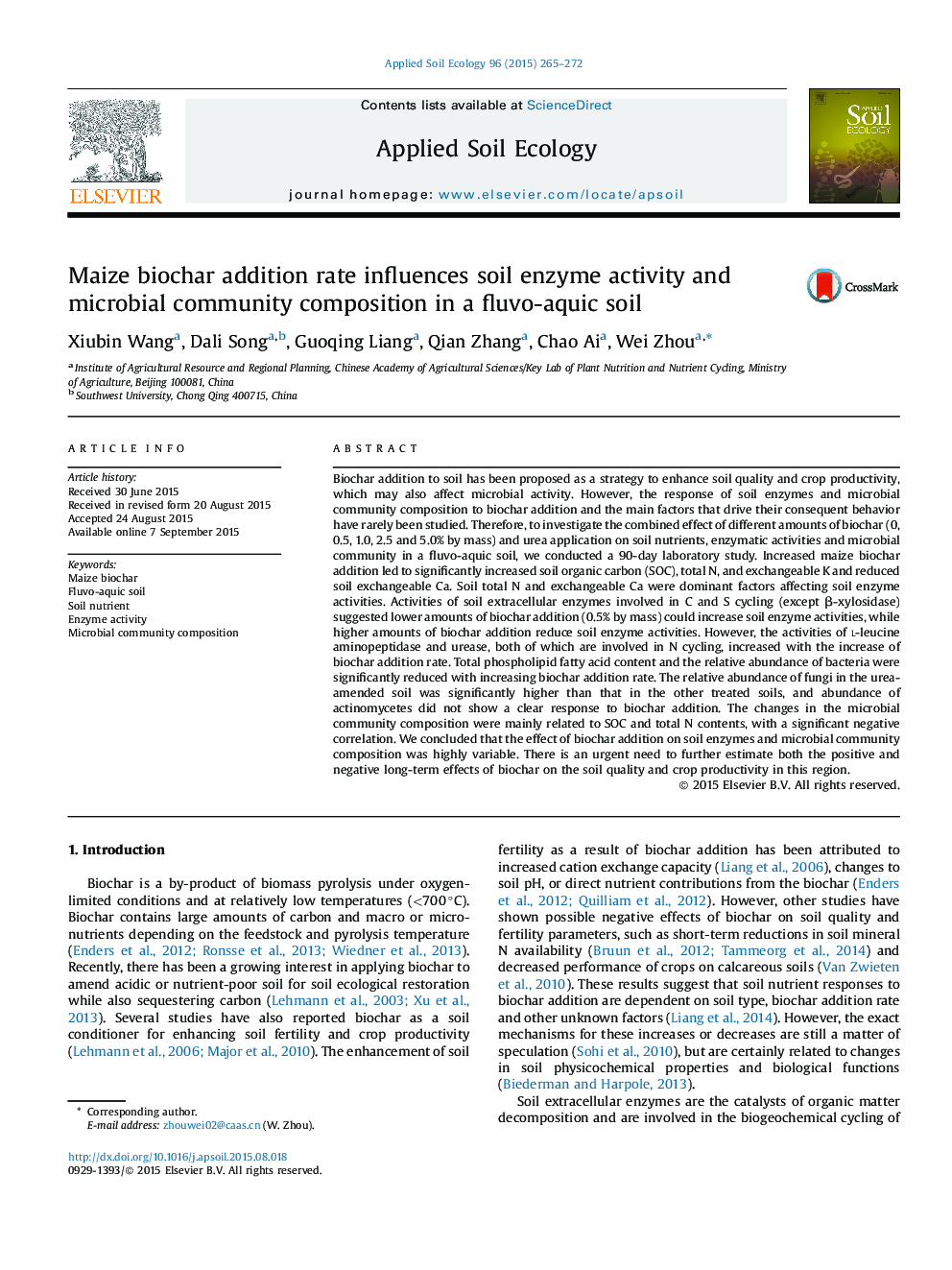| کد مقاله | کد نشریه | سال انتشار | مقاله انگلیسی | نسخه تمام متن |
|---|---|---|---|---|
| 4381918 | 1617787 | 2015 | 8 صفحه PDF | دانلود رایگان |
• SOC and total N contents markedly increased with increasing biochar addition rate.
• Exchangeable Ca and Mg contents decreased with increasing biochar addition rate.
• Lower amounts of MC addition increased soil enzyme activities involved in C cycling.
• Total N and exchangeable Ca were dominant factors affecting soil enzyme activities.
• PLFA biomarkers were negatively related to SOC and total N contents.
Biochar addition to soil has been proposed as a strategy to enhance soil quality and crop productivity, which may also affect microbial activity. However, the response of soil enzymes and microbial community composition to biochar addition and the main factors that drive their consequent behavior have rarely been studied. Therefore, to investigate the combined effect of different amounts of biochar (0, 0.5, 1.0, 2.5 and 5.0% by mass) and urea application on soil nutrients, enzymatic activities and microbial community in a fluvo-aquic soil, we conducted a 90-day laboratory study. Increased maize biochar addition led to significantly increased soil organic carbon (SOC), total N, and exchangeable K and reduced soil exchangeable Ca. Soil total N and exchangeable Ca were dominant factors affecting soil enzyme activities. Activities of soil extracellular enzymes involved in C and S cycling (except β-xylosidase) suggested lower amounts of biochar addition (0.5% by mass) could increase soil enzyme activities, while higher amounts of biochar addition reduce soil enzyme activities. However, the activities of l-leucine aminopeptidase and urease, both of which are involved in N cycling, increased with the increase of biochar addition rate. Total phospholipid fatty acid content and the relative abundance of bacteria were significantly reduced with increasing biochar addition rate. The relative abundance of fungi in the urea-amended soil was significantly higher than that in the other treated soils, and abundance of actinomycetes did not show a clear response to biochar addition. The changes in the microbial community composition were mainly related to SOC and total N contents, with a significant negative correlation. We concluded that the effect of biochar addition on soil enzymes and microbial community composition was highly variable. There is an urgent need to further estimate both the positive and negative long-term effects of biochar on the soil quality and crop productivity in this region.
Journal: Applied Soil Ecology - Volume 96, November 2015, Pages 265–272
